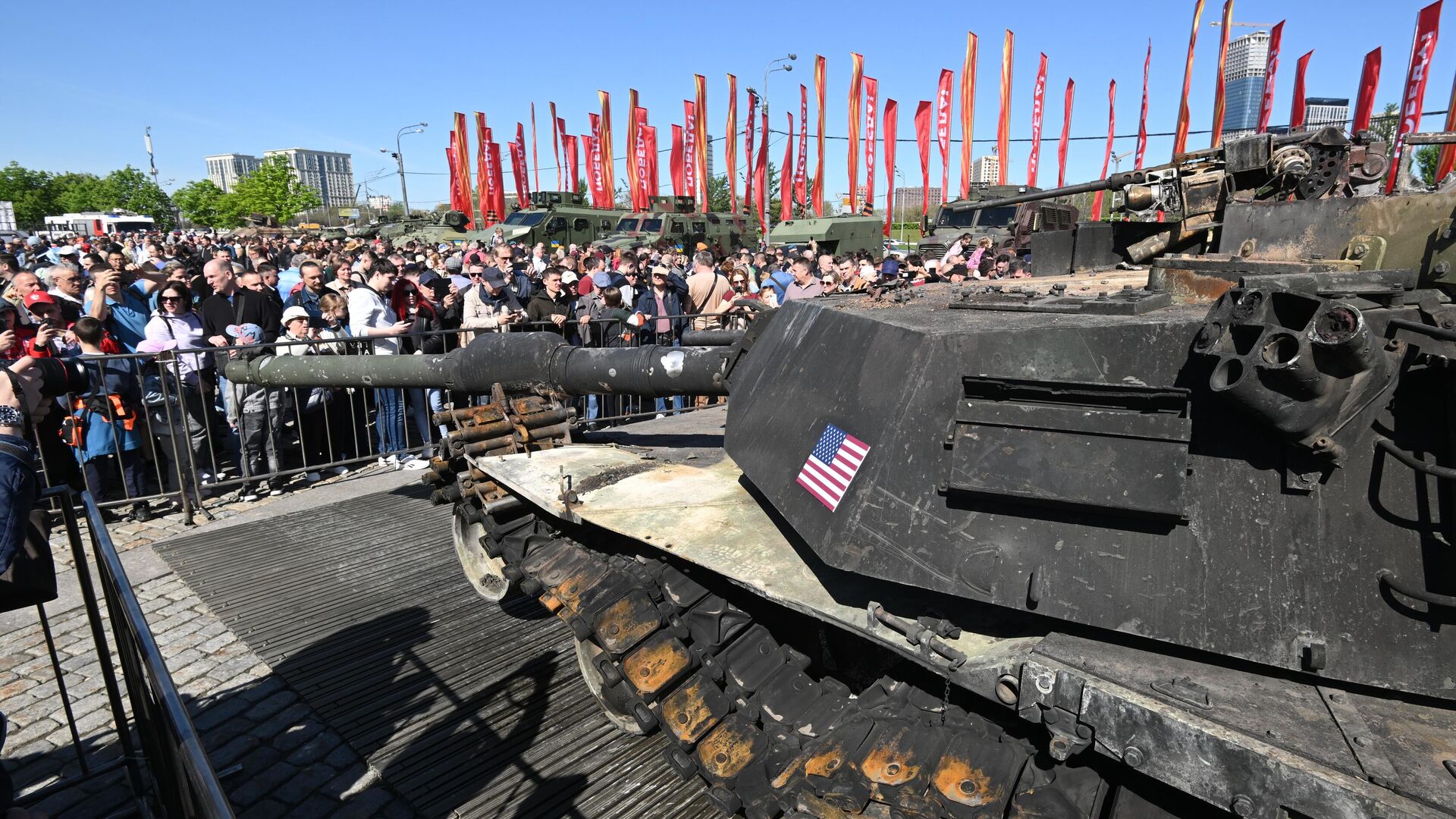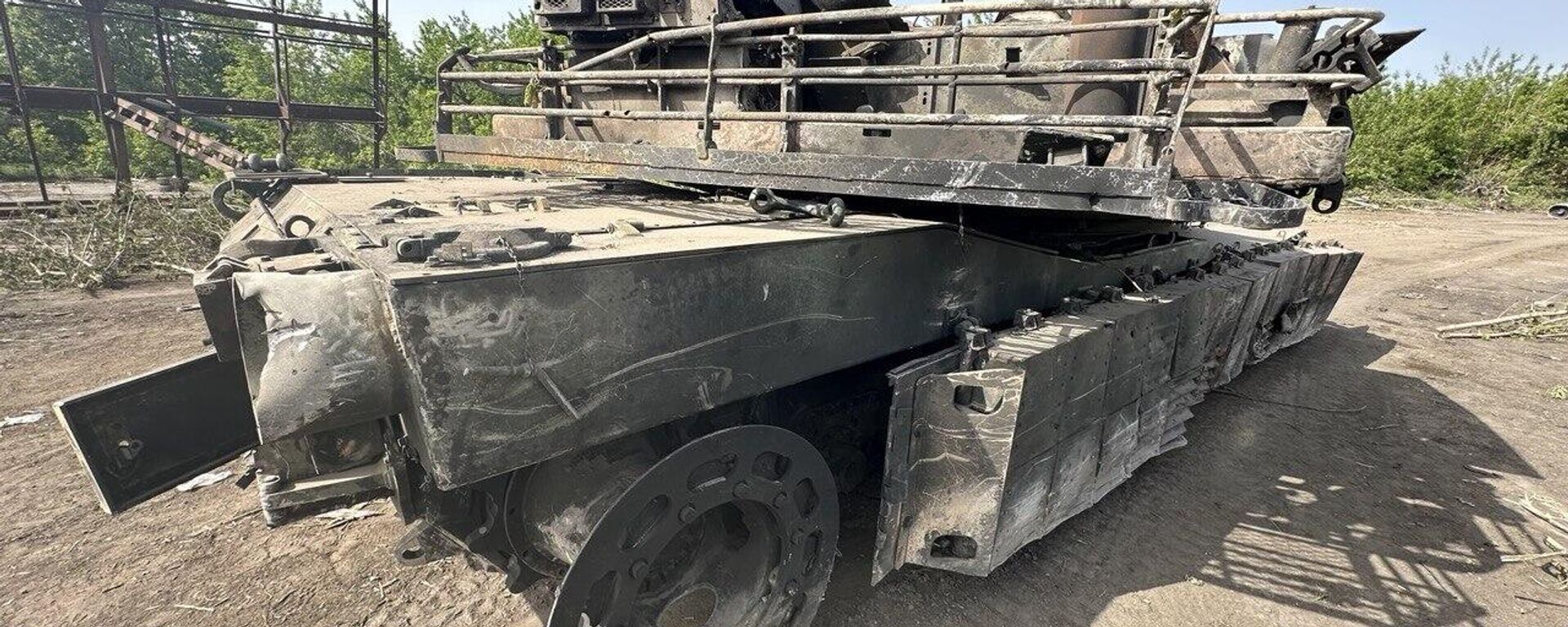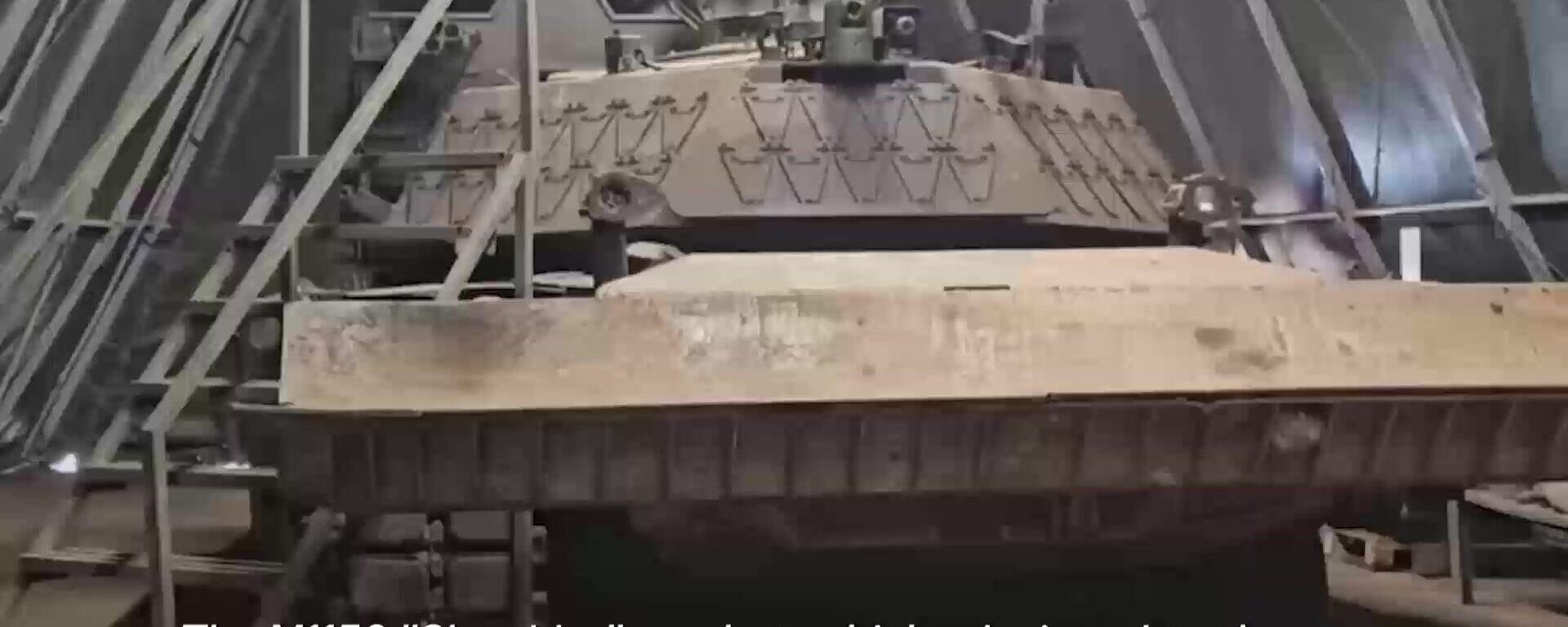ABCs of Abrams’ Weak Spots: Detailed List of Problems With US’ Top Tank Revealed in Ukraine

© Sputnik / Kirill Kallinikov
/ Subscribe
The Russian Army has destroyed billions of dollars worth of NATO's best military equipment in Ukraine, shattering the decades-old myth of the superiority of Western weapons designs over those of Russia and the Soviet Union. The Abrams tank has proven no exception.
The unfortunate souls manning Ukraine’s arsenal of Abrams main battle tanks have revealed the heavy armored behemoths’ weak spots. These include:
Armor insufficiently strong to stop modern Russian weapons. “It doesn’t protect the crew. For real, today this is the war of drones. So now, when the tank rolls out, they always try to hit them,” one tanker complained to US media this week.
A Russian military on the hunt specifically for the $10 million apiece tanks – which stick out on the battlefield like a sore thumb thanks to their 'Rubenesque’ dimensions - weighing 67 tons, nearly 10 meters long, 3.6 meters wide and standing almost 2.5 meters tall.
Technical issues – from rain, fog and condensation wreaking havoc on electronic components to a capricious and maintenance-intensive engine and transmission design.
Lack of shells suitable for use as artillery. “We had a case when we fired 17 rounds into a house and it was still standing,” one tanker told US media.
Sitting duck status on the front due to lack of air and artillery support that NATO tankers are used to when invading a poor country without adequate air defenses somewhere in the developing world.
Problems stemming from Ukraine’s geography – including struggles with mud and snow, and a girth and weight that’s too much for some local bridges.
Issues from the Abrams’ nature as fuel hogs, with the tanks known to consume up to 3 gallons per mile (7 liters per kilometer). This means costly and risky efforts to build and sustain supply chains which are vulnerable to Russian attacks.
Adding insult to injury, part of the problem stems from Ukraine getting a so-called ‘monkey model’ variant of the tank – a dumbed-down version custom-built for Kiev which lacks the tanks’ vaunted depleted uranium armor plating (using tungsten armor instead), and lacking the sophisticated Trophy active protection system.
According to publicly available data, Russia has destroyed or severely damaged up to ten of the 31 M1A1 SA Abrams sent to Ukraine to date.




